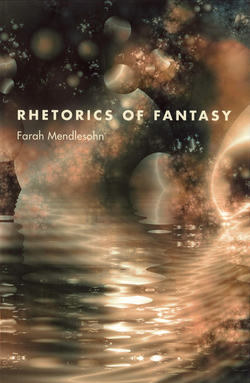Читать книгу Rhetorics of Fantasy - Farah Mendlesohn - Страница 13
На сайте Литреса книга снята с продажи.
The Portal-Quest Fantasy
ОглавлениеA portal fantasy is simply a fantastic world entered through a portal. The classic portal fantasy is of course The Lion, the Witch and the Wardrobe (1950). Crucially, the fantastic is on the other side and does not “leak.” Although individuals may cross both ways, the magic does not.6
Closest in form to the classic utopian or alien planet story (sometimes, but not always, a first contact tale), portal fantasies require that we learn from a point of entry. They are almost always quest novels and they almost always proceed in a linear fashion with a goal that must be met. Like the computer games they have spawned, they often contain elaborate descriptive elements. Yet while the intrusion fantasy must be unpacked or defeated, the portal fantasy must be navigated. Frequently, portal fantasies become more mysterious, rather than less. The reliance on destiny in so many portal fantasies may reflect the need to create rational explanation of irrational action without destroying this mystery. The language of the portal fantasy is often elaborate, but it is the elaboration of the anthropologist or the Pre-Raphaelite painter, intensely descriptive and exploratory rather than assumptive. It is a rare portal fantasy that achieves the Gothic (although David Lindsay’s A Voyage to Arcturus [1920], comes to mind, as does Alice’s Adventures in Wonderland [1865]) and when it does, the need to describe and explain remains a driving force behind the narrative and the language used. Most significant, the portal fantasy allows and relies upon both protagonist and reader gaining experience. Where the stock technique of intrusion is to keep surprising the reader, portal fantasies lead us gradually to the point where the protagonist knows his or her world enough to change it and to enter into that world’s destiny. One way to envision this technique is that we ride alongside the protagonist, hearing only what she hears, seeing only what she sees; thus our protagonist (even if she is not the narrator) provides us with a guided tour of the landscapes. Diana Wynne Jones’s Tough Guide to Fantasyland (1996) both mocks this technique and reduces it to its purest form: the travel guide.
When we think of portal fantasies, we commonly assume that the portal is from “our” world to the fantastic, but the portal fantasy is about entry, transition, and negotiation. Much quest fantasy, for all that it builds the full secondary world, fits better with the portal fantasy. Characteristically in quest fantasy the protagonist goes from a mundane life—in which the fantastic, if she is aware of it, is very distant and unknown (or at least unavailable to the protagonist)—into direct contact with the fantastic, through which she transitions, to the point of negotiation with the world via the personal manipulation of the fantastic realm. In chapter 1 I shall trace precisely this process in The Lord of the Rings. The discussion in chapter 1 will help to distinguish the creation of a convincing rhetorical secondary world from the techniques of immersive fantasy. In the quest fantasy we see the world through this transitional narrative: despite the assertion that this world has always existed, the technique remains identical to that of the portal fantasy and the effect on the language of the text is the same, forcing the author to describe and explain what is seen by the point of view character as she negotiates the world. The result, when done poorly, is didactic, but as I hope to demonstrate, even the most creative writers find it difficult in this form to avoid impressing upon the reader an authoritative interpretation of their world.
